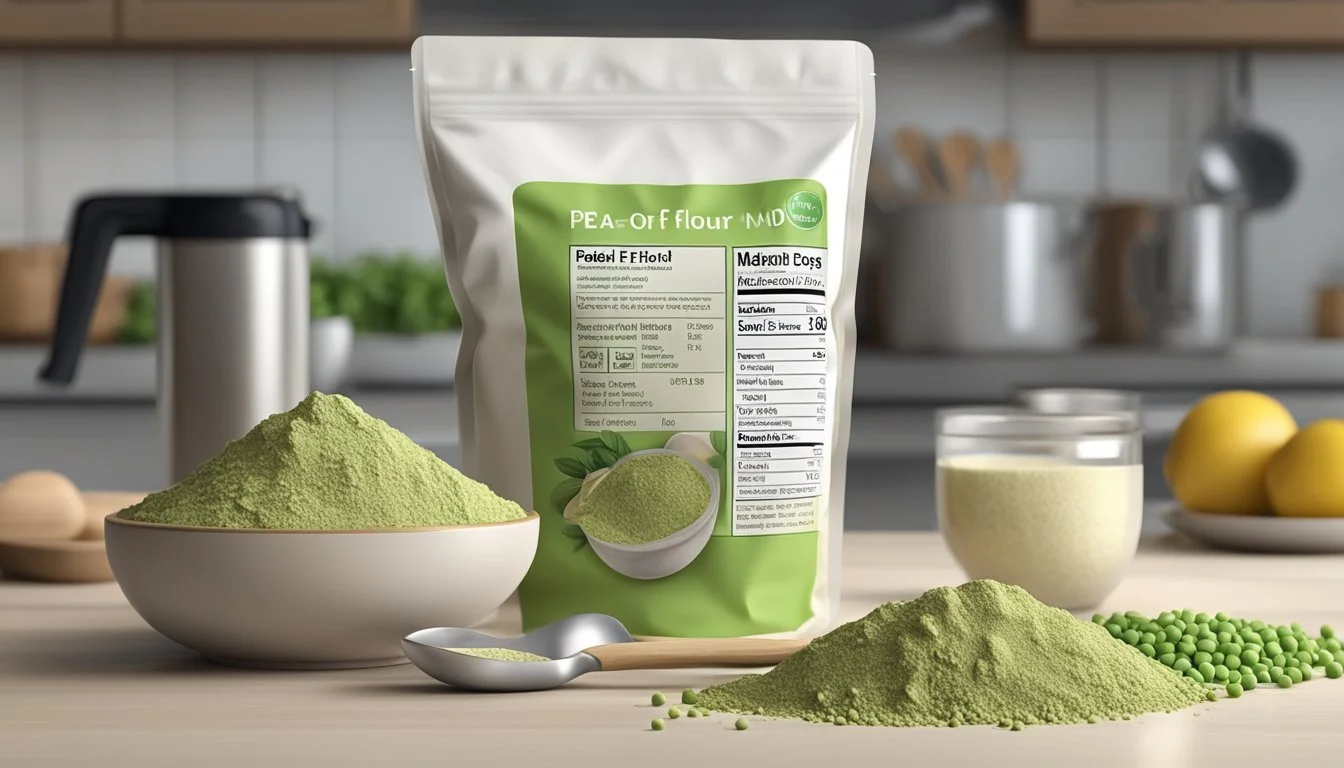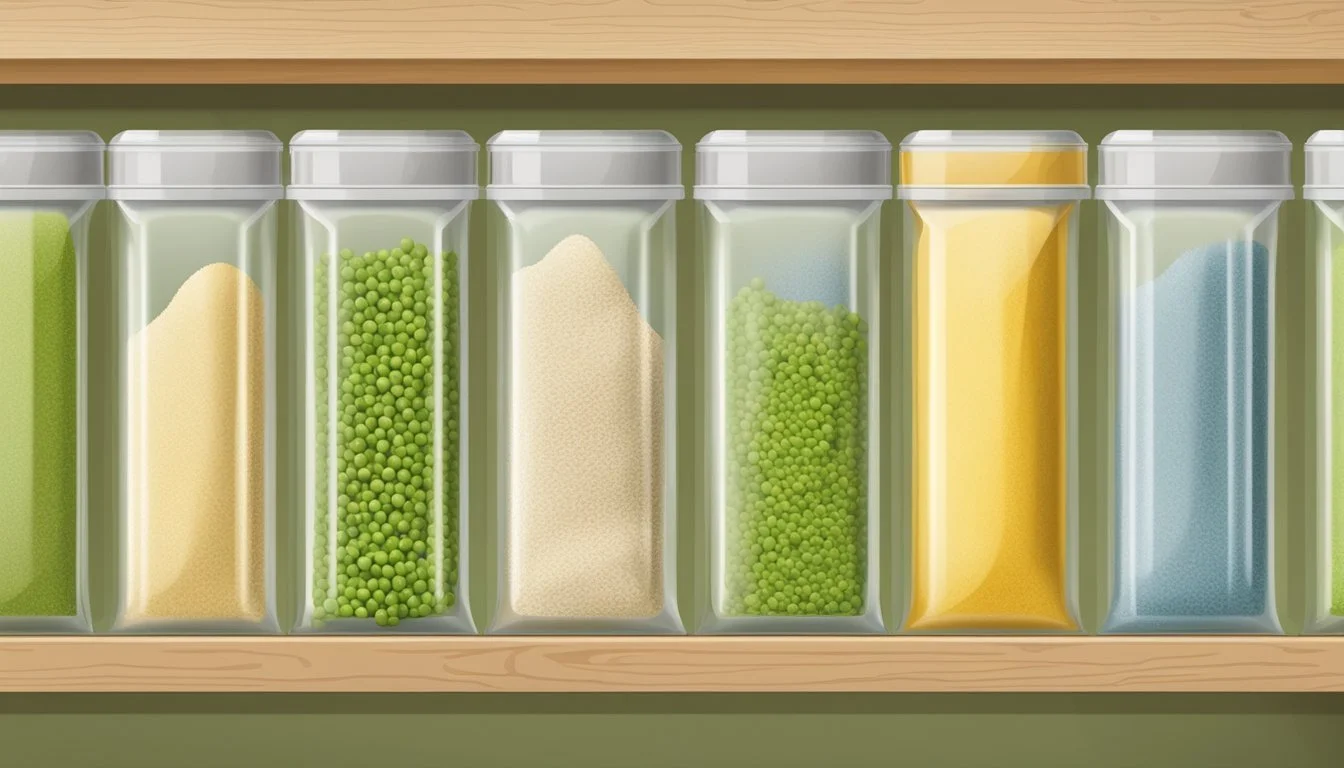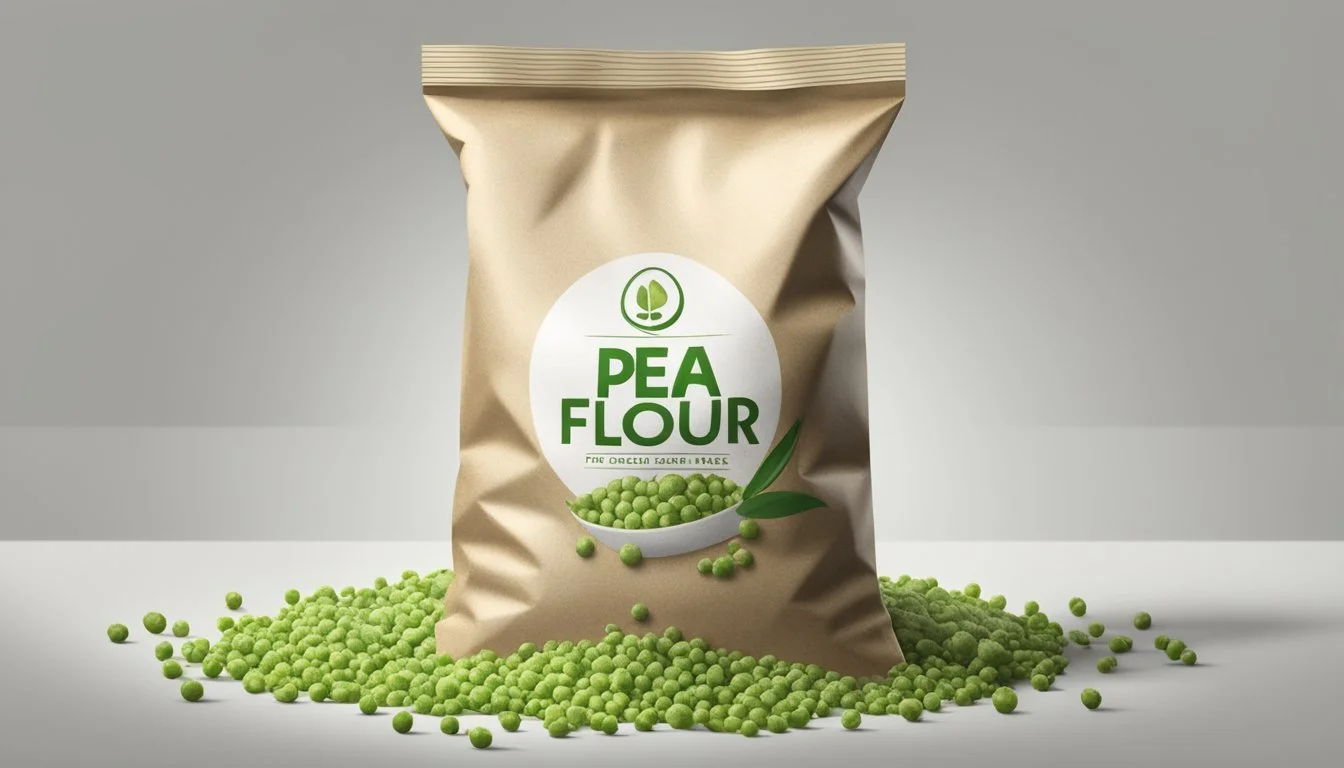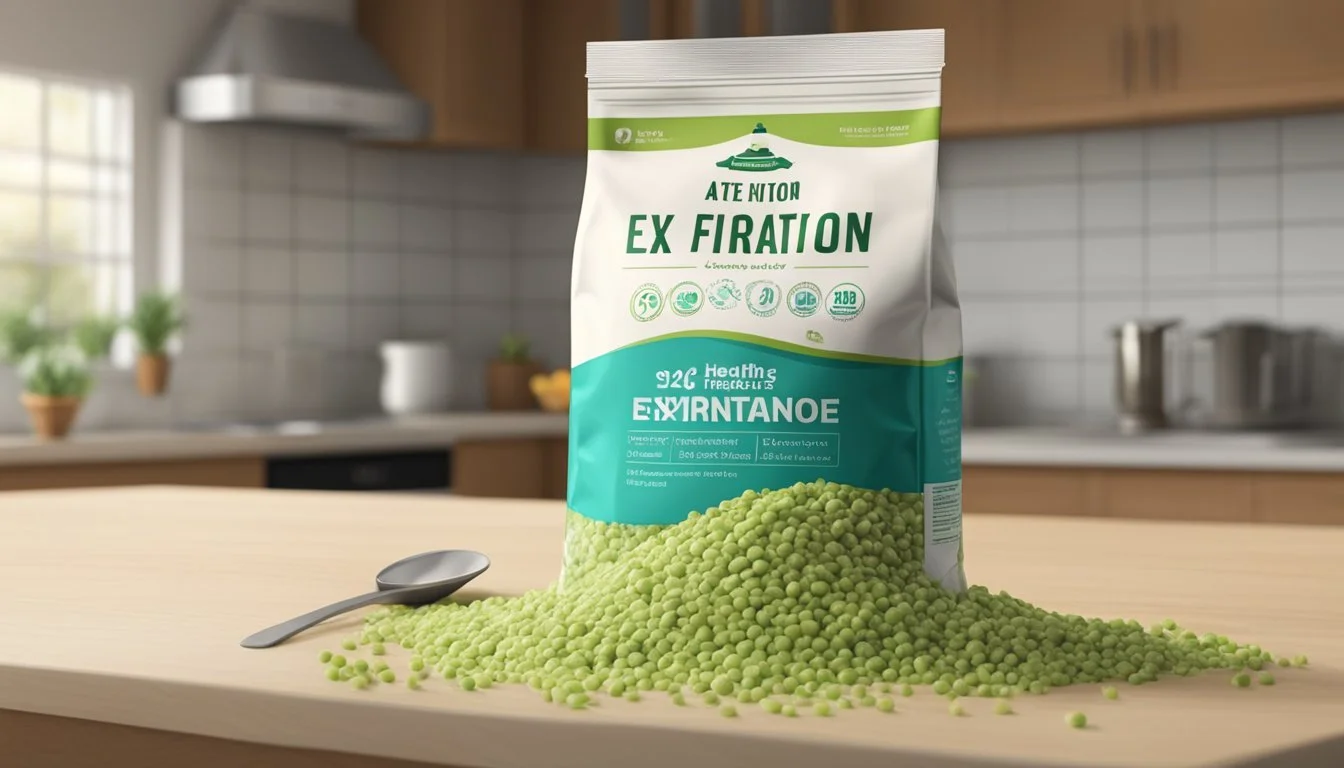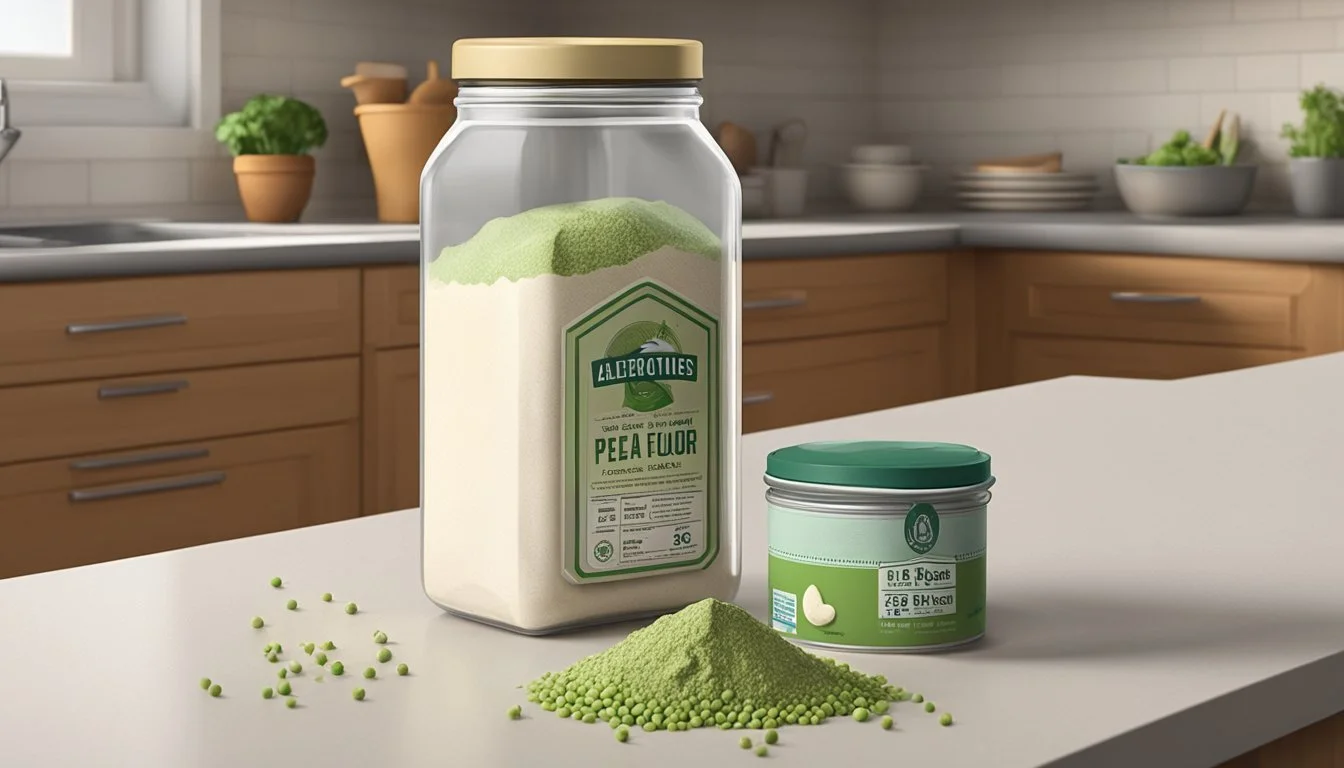Does Pea Flour Go Bad?
Shelf Life and Storage Tips
Pea flour, a popular gluten-free alternative, is increasingly making its way into kitchens across the globe. Yes, pea flour can go bad, just like any other type of flour. Generally, it has a shelf life of around 3 to 6 months when stored in a cool, dry place.
It is essential to monitor the condition of your pea flour to ensure food safety. Signs that your pea flour has spoiled include a change in smell, color, or the presence of insects. To extend its shelf life, storing it in an airtight container in the refrigerator or freezer can be highly effective.
Understanding the shelf life and proper storage methods for pea flour can help maintain its quality and safety, ensuring your gluten-free recipes are as delicious as intended. This post delves into the specifics of how to recognize spoilage and best practices for extending the freshness of your flour.
Composition and Nutritional Profile
Pea flour is known for its rich nutritional value, which includes an abundant protein content, dietary fiber, and essential vitamins and minerals. Its composition makes it a versatile ingredient, but it's important to consider aspects like fat content and rancidity risks.
Vitamins and Minerals Content
Pea flour offers a variety of vitamins and minerals essential for maintaining good health. It is a notable source of Vitamin B complexes such as niacin, thiamine, and folate, which are vital for metabolism and energy production.
Minerals like iron, magnesium, potassium, and zinc are also present in significant amounts. These minerals contribute to various bodily functions such as oxygen transport, bone health, and immune system support.
Due to its nutritionally dense profile, incorporating pea flour into diets can help meet daily vitamin and mineral requirements effectively.
Protein and Fiber
The protein content in pea flour is particularly high, making it an excellent plant-based protein source. Pea protein aids in muscle repair and growth, providing a valuable option for vegetarians and vegans.
Dietary fiber is another key component, with soluble and insoluble fibers aiding digestive health, regulating blood sugar levels, and contributing to a feeling of fullness.
The balance of protein and fiber not only enhances nutritional intake but also supports metabolic health and digestive efficiency.
Fat Content and Rancidity Risks
Pea flour contains a relatively low amount of fat, primarily unsaturated fats, which are healthier for the heart compared to saturated fats. The low fat content reduces the likelihood of rancidity, but proper storage is still crucial.
When exposed to light, oxygen, and heat, even the small amount of fat in pea flour can oxidize, leading to rancid odors and flavors. To extend shelf life, it is advisable to store pea flour in a cool, dark place and preferably in an airtight container.
Understanding and managing these risks ensures that the nutritional benefits of pea flour are retained over time.
Factors Affecting Shelf Life
Several factors can influence the shelf life of pea flour. These include moisture levels, exposure to light and heat, and the presence of oxygen. Each factor plays a crucial role in determining how long pea flour remains fresh and safe to consume.
Moisture and Mold Formation
Moisture is a significant concern for storing pea flour. High humidity can lead to the absorption of water, which creates an environment suitable for mold growth. Mold not only affects the appearance and smell of the flour but can also produce harmful mycotoxins.
To extend the shelf life, store pea flour in airtight containers to protect it from environmental moisture. Using desiccants in the storage container can also help absorb excess humidity. Keeping it in a dry, cool place minimizes the risk of moisture-triggered spoilage.
Light and Heat Exposure
Exposure to light and heat degrades the quality of pea flour over time. Direct sunlight and high temperatures promote the breakdown of the flour's natural oils, leading to rancidity. This spoilage not only alters the taste but also reduces the nutritional quality.
To prevent this, store pea flour in opaque containers or dark pantry shelves away from direct sunlight. Ideal storage temperatures are below 70°F (21°C). Consistently maintaining a cool environment helps inhibit the degradation process and prolongs the shelf life of the flour.
Oxygen and Spoilage
Oxygen exposure accelerates the spoilage of pea flour by promoting oxidation. Oxidation processes can result in the development of off-flavors and a decrease in quality. Airtight containers are essential for limiting oxygen exposure.
Consider using vacuum-sealed bags or containers with oxygen absorbers to further protect against spoilage. These methods can significantly reduce the presence of oxygen, thus extending the usable life of the flour. Additionally, minimizing the opening of the storage container reduces repeated oxygen exposure.
Proper storage techniques focusing on moisture, light, heat, and oxygen control are essential in maintaining the quality and safety of pea flour.
Proper Storage Techniques
Pea flour can maintain its freshness and quality if stored correctly. The following methods ensure longevity and optimal use of your pea flour.
Ideal Conditions in Pantry
Store pea flour in a cool, dry place away from sunlight and moisture. A pantry or cupboard works well if it maintains a consistent temperature below 75°F (24°C).
Humidity control is essential to prevent clumping and spoilage. Place a moisture absorber like silica gel packets near the storage area for added protection.
Check frequently for insects or pests, as these can contaminate the flour. Keeping the storage area clean further reduces the risk of contamination.
Refrigeration and Freezing Options
For extended shelf life, refrigeration or freezing is recommended. Place pea flour in the refrigerator at or below 40°F (4°C). This environment inhibits the growth of spoilage organisms, extending freshness.
For even longer storage, choose the freezer. Pea flour can be frozen for up to a year without significant quality loss. To use, allow it to reach room temperature gradually to avoid moisture condensation.
Packaging and Airtight Containers
Use airtight containers to protect pea flour from air, moisture, and pests. Glass or plastic containers with tight-sealing lids are ideal.
Before sealing, ensure the container is completely dry. Any moisture can encourage bacterial growth and spoil the flour. Mylar bags with oxygen absorbers offer a long-term storage solution, especially for freezer use.
By focusing on proper storage techniques, one can keep pea flour fresh and ready for use in various culinary applications.
Signs of Deterioration
Recognizing if pea flour has gone bad involves observing several indicators that point to spoilage. These indicators can include unpleasant smells, visible changes, and variations in texture.
Spoilage and Rancid Smells
A key sign of pea flour going bad is the presence of a rancid smell. Fresh pea flour typically has a neutral, slightly nutty aroma. If there’s a musty, sour, or overwhelmingly rancid odor, the flour is likely spoiled. This type of smell comes from the breakdown of oils in the flour, which can lead to spoilage.
Trust your sense of smell. If there is any doubt, it’s safer to discard the flour rather than risk using a potentially spoiled product.
Visual Signs of Spoilage
Visual inspection is another effective way to identify spoiled pea flour. Look for any discoloration from its original color. Pea flour should generally maintain a consistent, pale-yellow hue. Any signs of mold, which might appear as white, green, or black spots, are clear indicators that the flour has gone bad.
In some cases, insects or larvae might be present, indicating that the flour is unsafe for consumption. Always inspect your flour carefully to avoid using a compromised product.
Texture Changes
Texture changes are also indicative of spoilage in pea flour. Fresh flour should be a fine, dry powder. If the flour has started to clump or feels moist, this is a sign that it has absorbed moisture and potentially spoiled.
Clumping can lead to the growth of bacteria and mold, making the flour unsafe. Another texture-related sign is the presence of lumps that do not break apart easily, suggesting that the flour may have been exposed to humidity or dampness.
Food Safety and Health Implications
Pea flour, like other flours, can pose certain health risks if stored improperly or consumed after its shelf life. This section focuses on the dangers of spoiled flour and specific concerns for those with gluten sensitivities or celiac disease.
Risks of Consuming Spoiled Flour
Consuming spoiled pea flour can lead to various adverse health effects. Spoiled flour may harbor mycotoxins, toxic compounds produced by fungi. Mycotoxins can develop due to poor storage conditions, such as exposure to moisture.
Symptoms of mycotoxin poisoning may include nausea, vomiting, and diarrhea. Mycotoxins can also negatively impact the immune system over time. To minimize these risks, it is essential to store flour in a cool, dry place and to follow expiration dates.
Rancid flour is another concern. Pea flour can go rancid, producing an off smell similar to sour nuts or oil. Rancidity results from the oxidation of natural oils in the flour, leading to potential digestive issues when consumed.
Food safety tips include checking for unusual odors and keeping flour in airtight containers to extend its shelf life. Refrigerating or freezing flour can further help in maintaining its quality.
Celiac Disease and Gluten Concerns
Pea flour is inherently gluten-free, making it a suitable option for individuals with celiac disease or gluten intolerance. Those with celiac disease cannot consume gluten as it triggers an immune response that damages the small intestine.
Cross-contamination is a key concern when using pea flour. Flour can become contaminated with gluten during processing or if stored in shared spaces with gluten-containing products. It's important to use certified gluten-free pea flour to ensure safety.
Safe practices include using separate utensils and equipment. Labeling and dedicating specific storage areas for gluten-free products further help in preventing cross-contact. This careful handling ensures that individuals with gluten sensitivities can safely enjoy the benefits of pea flour without any adverse reactions.
Maximizing Flour Usability
Proper storage techniques and understanding expiration details are essential for keeping pea flour fresh and safe for consumption. Knowledge about best-by dates, expiration labels, and using preservatives can help reduce food waste.
Understanding Expiration and Best-By Dates
Manufacturers usually indicate best-by and expiration dates on packaging. These dates guide consumers about quality and safety. While best-by dates recommend optimal flavor and texture, expiration dates highlight when the product could become unsafe.
Pea flour may lose its nutritional value and develop off-flavors past the expiration date. Incorporating proper storage methods, like using airtight containers and storing in cool, dry places, preserves freshness. Consider transferring flour to the refrigerator or freezer to further extend its usability, especially when not used frequently.
Culinary Applications of Pea Flour
Pea flour, made from green or yellow peas, is a versatile ingredient. It is often used in baking, cooking, and as a thickening agent, particularly in gluten-free and vegan recipes.
Baking and Cooking Considerations
Pea flour can replace wheat flour in various baking recipes. Its high protein and fiber content make it ideal for health-conscious baking. However, it may alter the texture, so it's recommended to mix with other flours.
In cooking, pea flour can be used to make pancakes, crepes, and flatbreads. Its nutty flavor complements both savory and sweet dishes. Adjusting moisture levels is key, as pea flour absorbs more liquid.
Pea Flour as a Thickening Agent
Its fine texture and high starch content make pea flour an effective thickening agent for soups, stews, and sauces. Unlike some other thickeners, it doesn’t clump easily and adds a slight nutty flavor.
To use as a thickener, blend pea flour with cold water to create a slurry before adding to hot liquids. This prevents clumping and ensures a smooth consistency in the final dish.
Gluten-Free and Vegan Recipes
Pea flour is an excellent option for those following gluten-free and vegan diets. It’s naturally gluten-free, providing a safe alternative for celiac and gluten-sensitive individuals.
In vegan cooking, pea flour is used to make protein-rich vegan burgers, falafels, and meatless meatballs. Its high protein content supports a balanced diet. It can also be substituted in traditional dishes like pastas and breads to make them vegan-friendly.
Pea flour’s adaptability in gluten-free and vegan cooking makes it a valuable pantry staple. It can transform various dishes while meeting dietary needs.
Alternatives and Substitutions
Alternatives to pea flour include a variety of gluten-free options, each with unique properties. Some popular substitutions are almond flour, coconut flour, and oat flour. Understanding when to use these alternatives depends on their individual characteristics.
Comparison with Other Gluten-Free Flours
Almond Flour: Made from finely ground almonds, this flour is high in protein and healthy fats. It adds a mild nutty flavor and moist texture to baked goods.
Coconut Flour: This flour is very absorbent and requires additional liquid in recipes. It imparts a slight coconut flavor and is rich in fiber.
Chickpea Flour: Also known as garbanzo bean flour, it offers a robust flavor and is high in protein. It works well in savory dishes and dense baked goods.
Oat Flour: Made from ground oats, this flour provides a mild flavor and good binding properties. It is ideal for cookies and cakes where a tender crumb is desired.
When to Use Different Types of Flours
Almond Flour: Best used in recipes where a dense, moist texture is preferred, such as brownies or certain cookies. It's also great for adding a boost of protein and nutrients.
Coconut Flour: Suitable for gluten-free baking where a drier texture is beneficial. It works well for pancakes and muffins, but adjustments in liquid quantities are necessary.
Chickpea Flour: An excellent choice for savory dishes like breads, fritters, or as a thickener in soups. Its binding properties make it ideal for gluten-free baking without eggs.
Buckwheat Flour: Despite its name, buckwheat is gluten-free and lends a slightly earthy flavor. It is perfect for pancakes and crackers, providing a hearty texture.
By understanding the properties of each flour, one can choose the appropriate substitute for various recipes, ensuring both flavor and texture are preserved.


